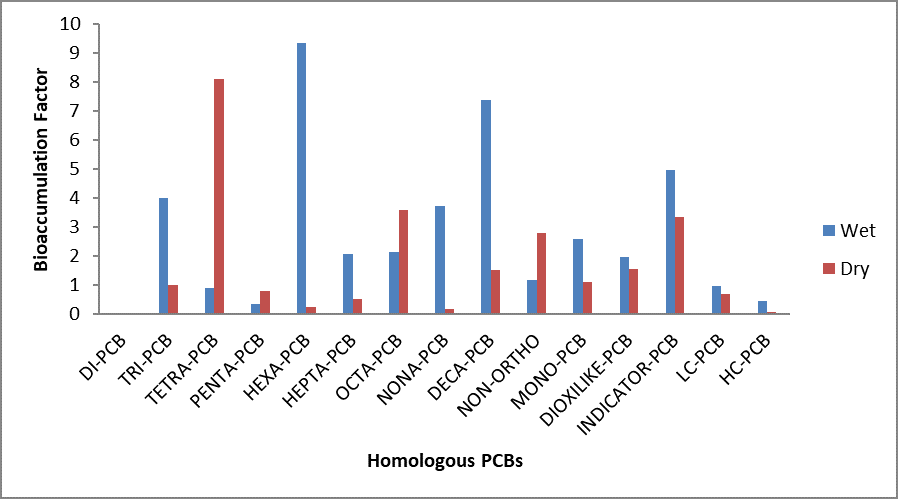Polychlorinated biphenyls (PCBs) in sediments and fish from dredged tributaries and creeks of river Ethiope, South-South, Nigeria: sources, risk assessment and bioaccumulation
Keywords:
Tributaries, Risk assessment, Sediments, Fish, BioaccumulationAbstract
Polychlorinated biphenyls (PCBs) are persistent organic pollutants that are ubiquitous in nature. In this study, the levels of PCBs were evaluated in sediments and fish samples obtained from dredged tributaries and creeks of River Ethiope. The work also assessed the possible relationship between the parameters and risks posed by polychlorinated biphenyls via several pollution indices. The mean concentrations of \sum PCBs on the sediments spanned from 645 – 3,977 µg/kg (wet season) to 252 – 1,219 µg/kg (dry season) dry weight. The concentrations of PCBs in fishes were 1,688 µg/kg (wet season) and 557 µg/kg (dry season). Higher bioaccumulation factors were observed with lower molecular weight PCBs than the higher ones (9 – Hexa – PCB, 8- Tetra- PCB). The results of the ecological risk (160 \leq Eri < 320), and human health risk (\geq 10-4 to 10-3-\leq 10-6), showed moderately to very high contamination and also moderately to very high cancer risk for children and adults. The strong positive correlation between PCB-114 and PCB-77, PCB-81, PCB-105 (r2 = 1.00, 0.99 & 1.00, p < 0.01) and the risks assessment values which ranged from 6.10 × 10-3 to 1.47 × 10-2 for children and 6.30 × 10-4 to 1.11 × 10-3 for adults (wet season), 1.04 × 10-3 to 2.99 × 10-2 for children and 7.80 × 10-5 to 5.61 × 10-1 for adults (dry season), showed rarely to adversely high potential ecological risk, biological effect and human health risk across the environment. The data show that higher levels of PCBs were observed in sediments and fish samples when compared with available standards. Considering the ILCR, hazard index, toxic equivalent, the sediments and fish obtained from these sites would be considered risky for humans. Dredging activities are majorly responsible for the high levels of PCBs across the sites. These have contributed significantly to the environmental status of the studied area.

Published
How to Cite
Issue
Section
Copyright (c) 2024 B. O. Eyenubo, V. O. Peretomode, F. Egharevba, S. A. Osakwe, O. G. Avwioro

This work is licensed under a Creative Commons Attribution 4.0 International License.







